Grand Canyon National Park
By Cindy Carlsson
What is Grand Canyon National Park?
Grand Canyon National Park features one of the world’s largest and most dramatic gorges. The twisting canyon of the Colorado River is both a stunning landscape and a 1.5 km (almost a mile) deep map of earth’s geological evolution.
Disclosure: This article contains affiliate links. Making a purchase through an affiliate link will mean a small commission for this website. This will not affect your price.
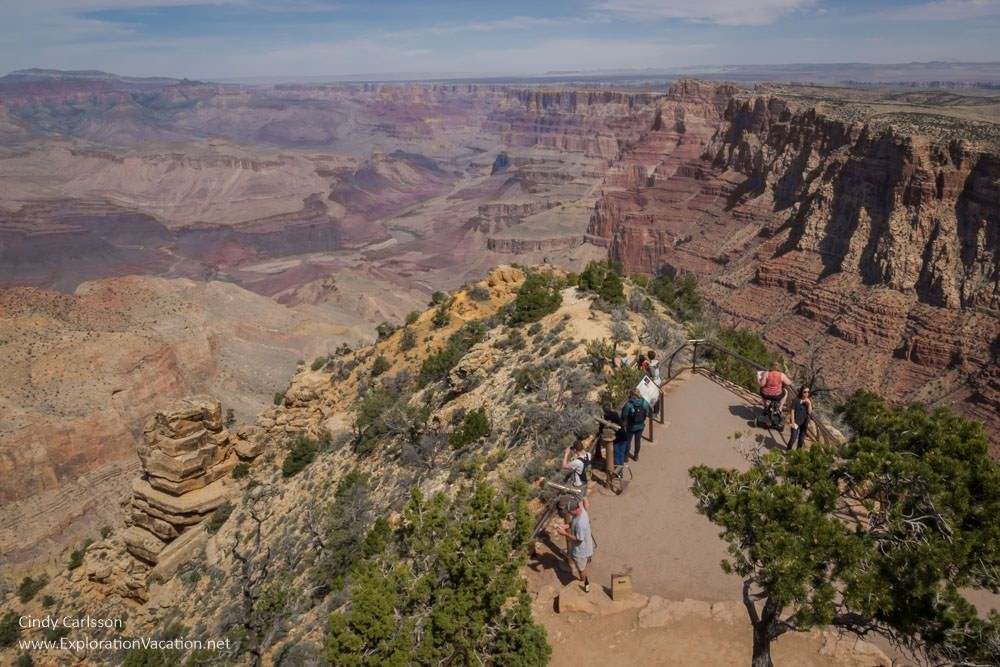
The park covers nearly 5,000 sq km (almost 2,000 sq miles) in the canyon and along the rim above. Hikers and river rafters can explore the bottom of the canyon, but most visitors only see it from the rim above. There they find stunning views over a vast landscape of mountains and buttes that seem to rise endlessly from the valley below.
Why is Grand Canyon National Park a UNESCO World Heritage site?
Grand Canyon National Park is a UNESCO World Heritage site because of its size, beauty, geology, ecosystems, fossils, and more.
UNESCO explains: “Its vastness is stunning, and the evidence it reveals about the earth’s history is invaluable. . . . The buttes, spires, mesas and temples in the canyon are in fact mountains looked down upon from the rims. Horizontal strata exposed in the canyon retrace geological history over 2 billion years and represent the four major geologic eras.”
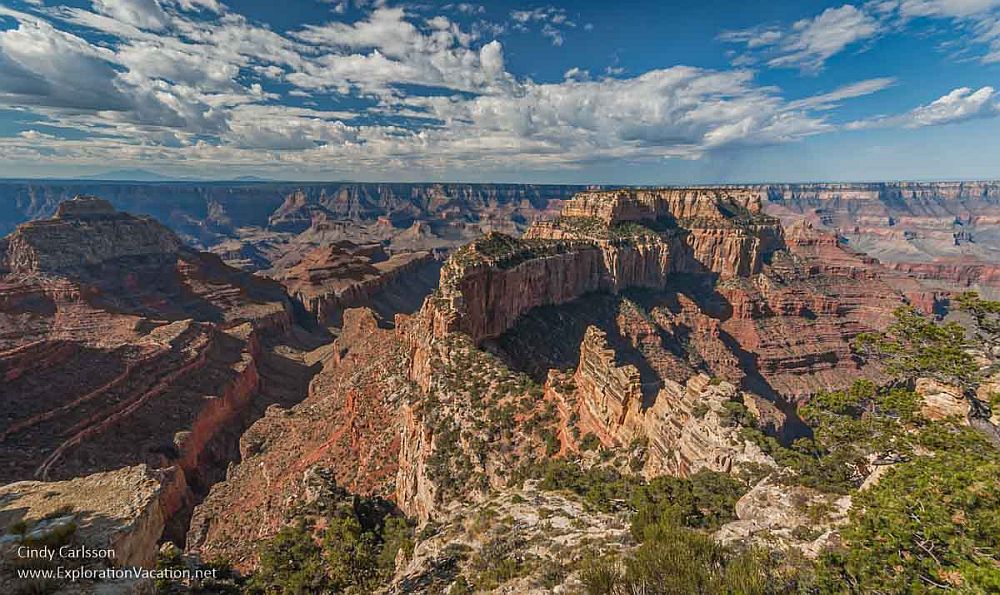
What can you expect on a visit to the Grand Canyon?
While raft trips offer a way to view large sections of the canyon from the water, most visitors first see it from the rim.
The national park has two developed areas on the North and South Rims. Both provide similar views of and access to the canyon itself. Both also offer a range of hiking trails, paved paths, and overlooks, as well as food and lodging. A combination of roads and trails in each area make it easy to take in the astounding scenery. Paths wind along the rim and below. Scenic lookouts take visitors right to the very edge of the gorge. In addition, mule rides and access to facilities at the bottom of the canyon are also available on both sides of the canyon. The big difference between the two visitor areas? The South Rim is much more developed and sees many more visitors.
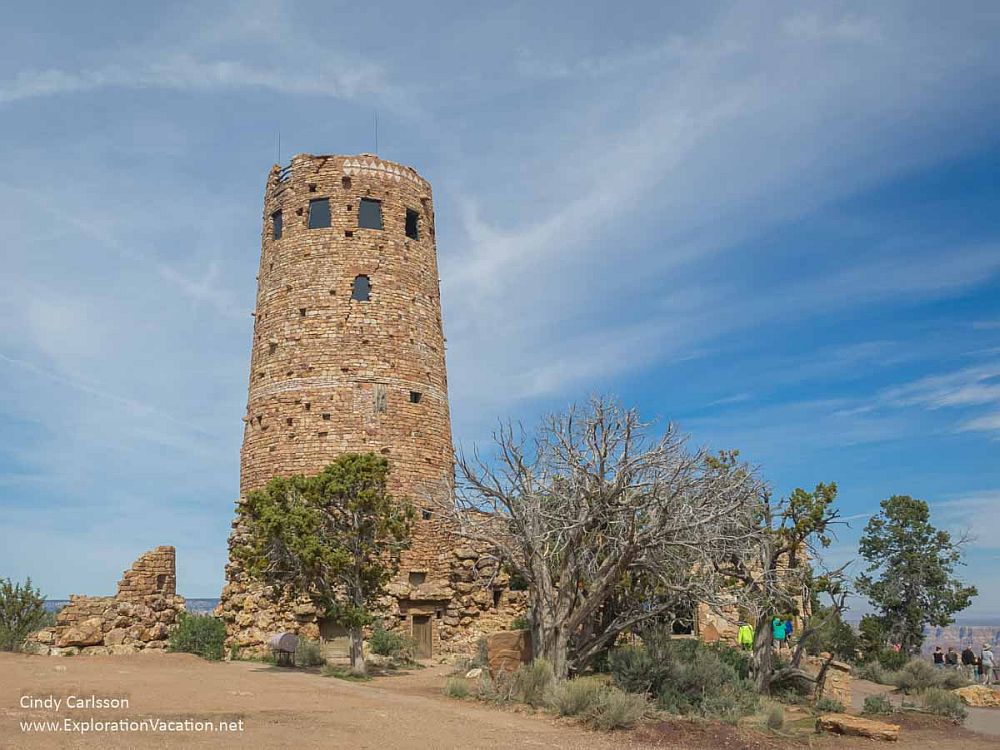
But the South Rim is actually what most people think of as the Grand Canyon. With lots of dining and lodging options, historic buildings, a couple small museums, and easy access from Phoenix, this is by far the most popular part of the park. It can be very crowded, but it is still stunning. (See the view from all South Rim scenic overlooks here.) And there are lots of options for how you spend your time here. Spend the day hiking along or just below the rim or a couple of days hiking down to the bottom of the canyon. Or enjoy sunrise over the canyon, take a short hike along the rim, and then sit down for a gourmet lunch in a restaurant at the canyon’s edge. While there is plenty of nature to explore along the South Rim, there are plenty of other things to do too.
On the other hand, only about 10% of visitors see the Grand Canyon from the North Rim. That means they get the same spectacular views (or maybe even better ones) and it’s never very crowded. But there are fewer facilities here too. It feels more like being at the edge of a vast wilderness – and the canyon really is the focus. Of course, you can always sit on the patio outside the lodge with a cocktail and watch the sunset. It’s not like you are really in the wilderness.
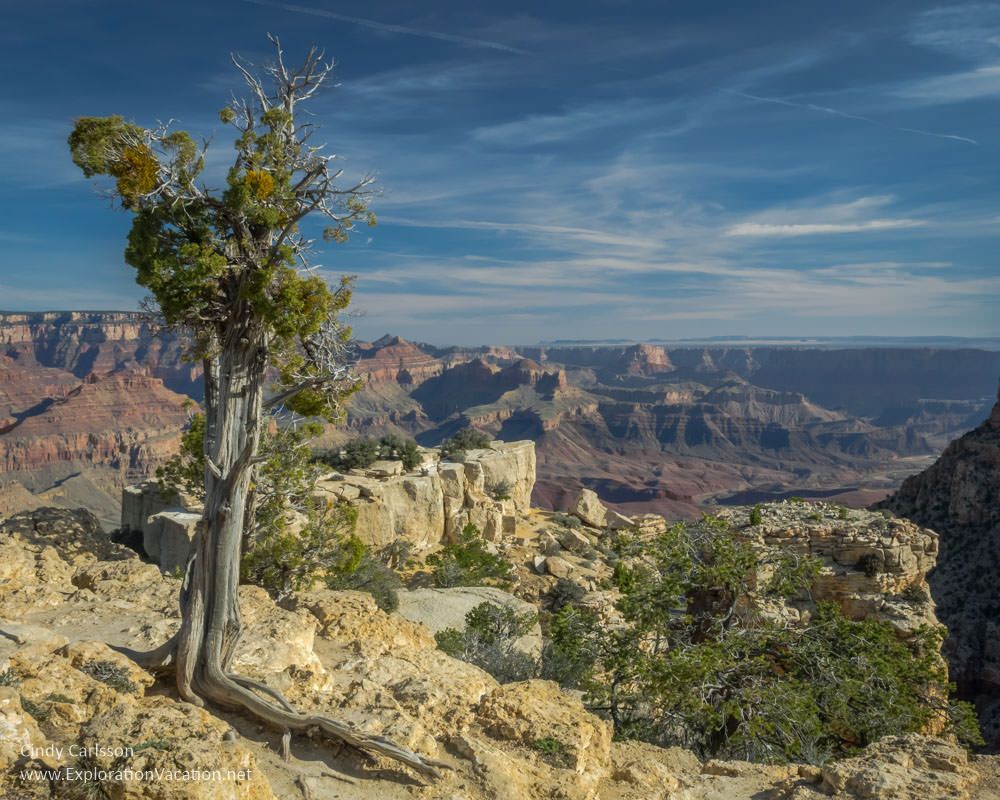
Is it worth visiting the Grand Canyon?
The Grand Canyon is one of the great natural sights in the world. If you travel anywhere in the American Southwest, it should be on your itinerary.
Stay at the South Rim for a few hours, a few days, or more
Even if nature isn’t really your thing, you’re sure to be impressed by the vista from almost any overlook. The South Rim also has interesting historic buildings, a couple of small museums, and a few other more cultural options.
Lots of people visit the South Rim as a day trip from Phoenix or even Las Vegas. This makes for a very long day and doesn’t leave a lot of time to explore the park. But if you just want to see the canyon and take a few pictures, it’s one way to do it. Just keep in mind that you will be in the park at the busiest time of day when simply getting in and finding a place to park can be a very slow process.
Staying overnight in the park or in a nearby city makes it easier to arrive earlier in the day when the park is less crowded. And it makes it much easier to enjoy the park at both sunrise and sunset, which are two of the most beautiful times of day here. But stay for a few days if you plan to hike, do a mule ride into the canyon, or just relax awhile in a stunning place.
Use the map below to find accommodations inside the park on the south rim (Grand Canyon Village) or just outside the entrance in Tusayan:
Stay at the North Rim for at least a few days
Because of its relative inaccessibility, the North Rim of the Grand Canyon isn’t a day trip destination. This is the place to rent a campsite or a cabin and settle in for a few days or a week or more. It has a restaurant and offers mule tours, but it lacks many of the other amenities of the South Rim. That makes the North Rim ideal for people who are happy to explore a stunning natural area without other diversions to keep them entertained.
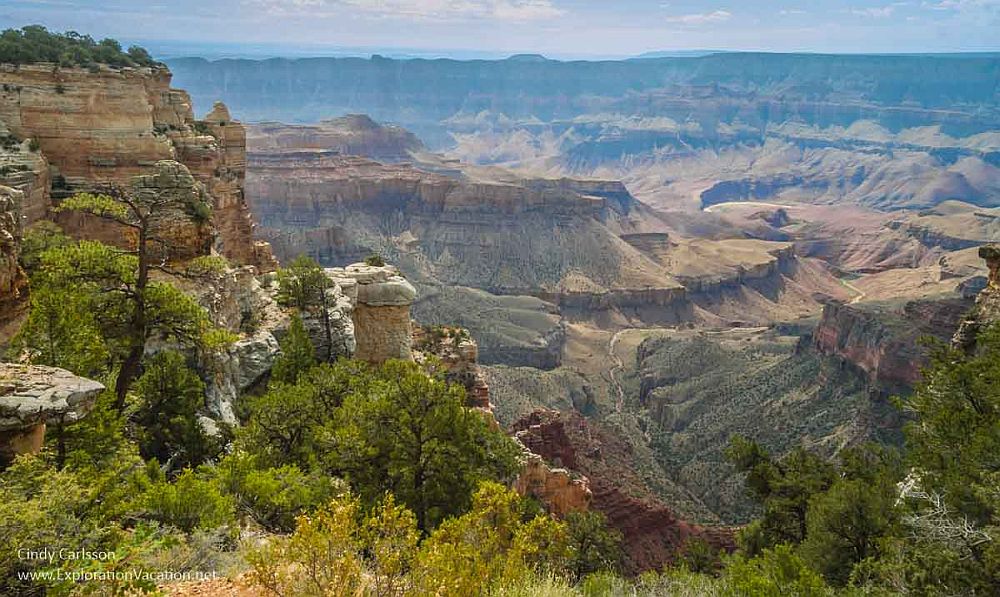
Tips for visiting the Grand Canyon
The South Rim is open year-round, except when winter weather causes a temporary road closure. On the other hand, most facilities on the North Rim are only open during the summer season. There is no road access to the North Rim in winter. However, winter camping is available for those who hike, snowshoe, or cross-country ski into the park.
Plan ahead. Lodging is available on both the North and South Rim, but book well in advance. And, while lodging options abound near the park on the South Rim, there are no nearby options on the North Rim. And trips down to the bottom of the canyon from either side require reservations very, very far in advance.
Even if you don’t plan to hike very far, carry plenty of water at all times. It’s easy to follow a trail just a little farther than you planned. Hiking down into the canyon even a little way is going to involve a strenuous hike back out. And the air is usually very dry.
Be prepared for very cold weather any time between November and March and for extremely hot weather during the summer.
Open-toe shoes are fine if you stay on the paved walkways. But wear sturdy shoes if you are walking anywhere else, as many paths and trails are dusty, uneven, rocky, and often lined with pricky vegetation.
Morning is the quietest time anywhere in the park and sunrises can be absolutely spectacular.
Some roads along the South Rim are closed to private vehicles most of the year. Allow extra time to get around if you are using the shuttle. When the park is busy you may need to wait for more than one shuttle before it’s your turn to board.
Other things to do in the area:
- The UNESCO site only includes the national park, which winds around most of the canyon. But the Hualapai Tribe has an area where they offer a variety of activities. Called the West Canyon, this is where you’ll find the Grand Canyon Skywalk, a zipline, and other tourist infrastructure that takes you in and above the canyon.
- Havasu Falls is located in a remote spot between the developed South Rim area of the national park and Grand Canyon west. This is a strenuous multi-day hike.
- A visit to the North Rim combines well with travel to Zion and/or Bryce National Parks.
Where is the Grand Canyon?
Grand Canyon National Park is located in northern Arizona.
South Rim entrance
The South Rim has two entrances: the South Entrance outside the town of Tusayan and the East Entrance near the park’s Desert Watchtower.
Most visitors enter at the South Entrance. Driving distances are: 130 km (80 miles) from Flagstaff, 185 km (115 miles) from Sedona, 370 km (230 miles) from Phoenix, or 450 km (280 miles) from Las Vegas. Visitors coming from Lake Powell or Page will use the East Entrance (180 km/110 miles). Driving times can be much longer than expected, as most routes include mountain roads. Parking is included in your vehicle entry fee, but can be hard to find during busy times of day.
Phoenix and Flagstaff both have commercial air service. Limited air service is also available at the Grand Canyon Airport near the park. Sightseeing flights over the Grand Canyon leave from this airport.
Groome Transportation offers daily service to the South Rim from Phoenix and Flagstaff. Amtrak offers rail service to Flagstaff that includes a bus connection to the park. Additional shuttle services may be available through area hotels as well. And, of course, tours booked in Flagstaff, Phoenix, Las Vegas, or elsewhere should include transport to the park.
Rail fans can take the historic Grand Canyon Railway to the park from the nearby city of Williams.
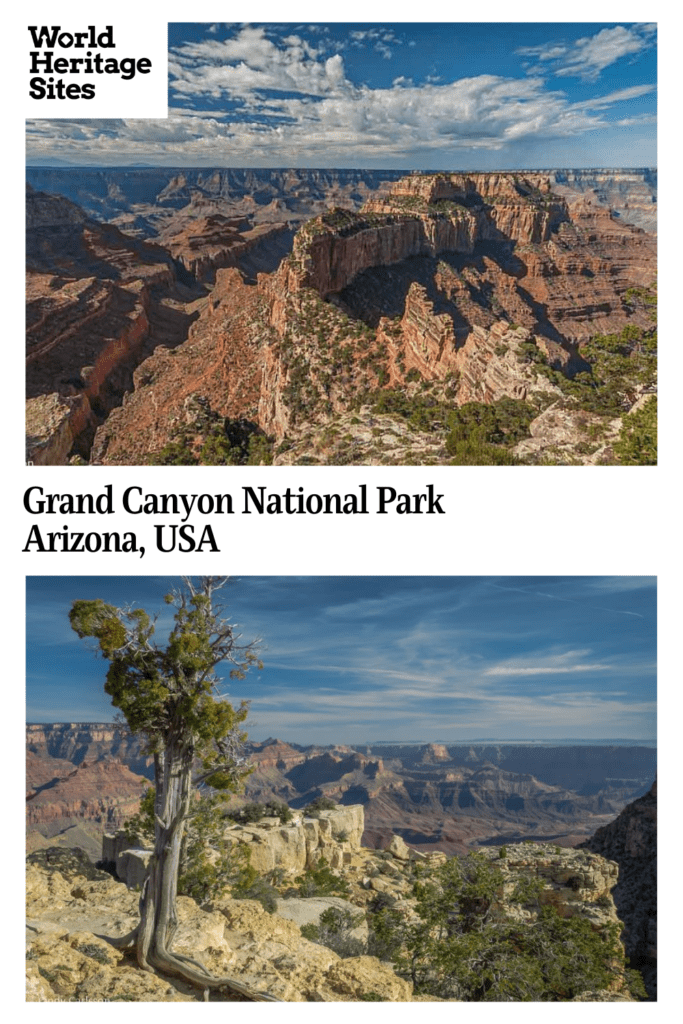
Rim to Rim
From the South Rim, the North Rim is an extremely strenuous 30 km (20 mile) two-day hike through the canyon or a 340 km (210 mile) drive. A seasonal Trans-Canyon Shuttle also connects the two once a day in each direction. Travel time on the shuttle is about 4½ hours each way.
North Rim entrance
Grand Canyon National Park’s North Rim Entrance is located near the Utah border 50 km (30 miles) from Jacob Lake, Arizona. Driving distances are: 565 km (350 miles) from Phoenix, 330 km (217 miles from Flagstaff, or 440 km (275 miles) from Las Vegas. It’s a 180 km (110 mile) drive from Zion National Park, that will take at least two or three hours depending on the route. The drive from Bryce is 250 km (155 miles), with the same one-hour difference depending on the route you choose. Once you enter the park, it’s still another 25 km (15 miles) to the rim itself. Parking is included in your vehicle entry fee.
Aside from the Trans-Canyon Shuttle, there is no transit service to the North Rim.
For more information about Grand Canyon National Park, its opening hours and admission fees, see its official website.
Have you been to the Grand Canyon? If so, do you have any additional information or advice about this UNESCO World Heritage site? Please add your comments below!

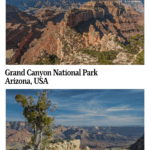
Sad news. A wildfire (likely started by lightning strikes) destroyed most of the developed area along the North Rim, including campgrounds and the historic park lodge and cabins. The entire North Rim is likely to be closed for the rest of the 2025 season and the next as well. This was one of the most incredible natural areas I’ve visited. For years I’ve dreamed of winning the cabin lottery to spend a week at one of the handful of old cabins that sit right on the rim, but it’s unlikely those will be rebuilt. And it will be many generations before the forest fully regrows — if ever. On the positive side, quick action by the park staff got everyone out of the park before the fire hit, so no lives were lost. But it’s a reminder of how fragile our precious natural areas are.
The South Rim is still open, although the canyon is currently filled with a lot of smoke and trails to the bottom seem to be closed, as is Phantom Ranch.
Thanks for the update! For any future readers, this comment was posted on July 13, 2025, so the smokiness might be gone by the time you read this. As Cindy pointed out, it’ll be much longer before the North Rim has recovered.